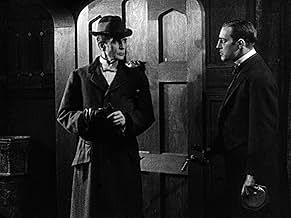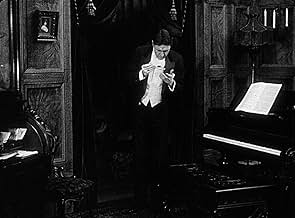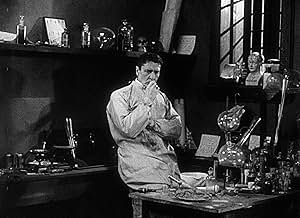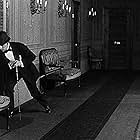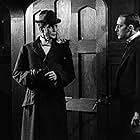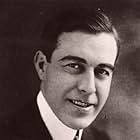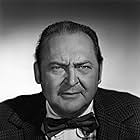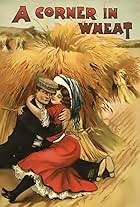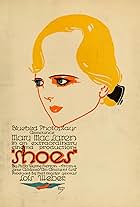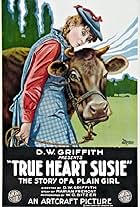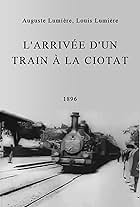When a couple of swindlers hold young Alice Faulkner against her will in order to discover the whereabouts of letters which could spell scandal for the royal family, Sherlock Holmes is on th... Read allWhen a couple of swindlers hold young Alice Faulkner against her will in order to discover the whereabouts of letters which could spell scandal for the royal family, Sherlock Holmes is on the case.When a couple of swindlers hold young Alice Faulkner against her will in order to discover the whereabouts of letters which could spell scandal for the royal family, Sherlock Holmes is on the case.
Edward Arnold
- Moriarty Henchman In Striped Cap
- (uncredited)
- Director
- Writers
- All cast & crew
- Production, box office & more at IMDbPro
Storyline
Did you know
- TriviaWilliam Gillette was the first actor to be universally acclaimed for portraying Sherlock Holmes, having written and staged the first authorized play in 1899. This film is the only preserved record of him doing Sherlock Holmes.
- GoofsThe sign outside Dr. (John) Watson's office reads G. WATSON, M.D. Either nobody noticed the art director's mistake or, more likely, they didn't want to go to the time and expense of making a new sign.
- Quotes
Sherlock Holmes: This, my friend, is the layout of the house where two swindlers are holding a young woman against her will.
- ConnectionsFeatured in From Lost to Found: Restoring William Gillette's Sherlock Holmes (2015)
Featured review
In 2014 it was announced that a negative of this film had been discovered in France and would be restored for the world to see. After being considered lost for nearly 100 years it is miraculous for this to have happened. Once the restoration was complete there were only two planned theatrical screenings; one at the Cinémathèque Française film festival in France in January 2015 and another at the Silent Film Festival in San Francisco in the United States in May of 2015.
I had the good fortune to be able to attend the San Francisco screening at the beautiful and historic Castro Theater. Live music accompanied the screening, performed wonderfully by the Donald Sosin Ensemble. The theater itself was filled to capacity for the single screening and a line trailed down the sidewalk outside the building.
The film itself, post restoration, looked great. The image quality throughout was very strong and consistent with rich detail. One of the most striking features of the film itself is it's camera work and cinematography. Unusual for the time period there is a lot of camera movement and stylized editing. The visual style employed by the film is both very effective and engaging and may well have been a significant influence on other filmmakers of the time. (This viewer has seen nothing similar to it for that era.) As per the original theatrical release the film is color-tinted an orange-sepia for the interior/daylight sequences and a dark blue for the night/exterior sequences. This also is a very effective device that adds impact to the film, and successfully heightens the experience. (Especially compared to if the entire film were in standard black and white.) There is a significant amount of exposition present in the inter-title cards (which had to be translated from French back into English). This may be because much of Gillette's play had to be scaled back for the film adaptation.
What of Gillette? His was the first performance that anyone ever saw of Sherlock Holmes. In general appearance he does seem to be cut almost directly out Sidney Pagent's original drawings for Holmes. At the time of filming he had been playing Holmes for decades and he does portray a rich and nuanced Holmes on screen. His characterization is both powerful and playful at times, displaying a wry sense of humor. While comparisons will be made to every other actor who has been Holmes on screen (particularly Basil Rathbone, his closest contemporary) his physical movement did remind this viewer a great deal of Jeremy Brett. His was a strong and sturdy Holmes and not a thin rail of a man.
Other classic characters are, of course, present. Watson is used minimally, and not surprisingly, often for comic effect. However, it is done with care and he is an intelligent and believable character in the story. In general, the other performances (done by several of Gillette's stage company) are above par for films of the period, but do occasionally dip into Victorian clichés (as does the story now and then).
The script was a pastiche of several Holmes stories and Gillette had Doyle's full permission to take liberties with the cannon, and he does. Audiences should keep this in mind, and note that during filming Sherlock Holmes was not the century-old icon that he is today. Overall, the film is still enjoyable and engaging even for contemporary audiences. Gillette's Sherlock Holmes has aged well, and happily can be enjoyed again by new generations of fans.
I had the good fortune to be able to attend the San Francisco screening at the beautiful and historic Castro Theater. Live music accompanied the screening, performed wonderfully by the Donald Sosin Ensemble. The theater itself was filled to capacity for the single screening and a line trailed down the sidewalk outside the building.
The film itself, post restoration, looked great. The image quality throughout was very strong and consistent with rich detail. One of the most striking features of the film itself is it's camera work and cinematography. Unusual for the time period there is a lot of camera movement and stylized editing. The visual style employed by the film is both very effective and engaging and may well have been a significant influence on other filmmakers of the time. (This viewer has seen nothing similar to it for that era.) As per the original theatrical release the film is color-tinted an orange-sepia for the interior/daylight sequences and a dark blue for the night/exterior sequences. This also is a very effective device that adds impact to the film, and successfully heightens the experience. (Especially compared to if the entire film were in standard black and white.) There is a significant amount of exposition present in the inter-title cards (which had to be translated from French back into English). This may be because much of Gillette's play had to be scaled back for the film adaptation.
What of Gillette? His was the first performance that anyone ever saw of Sherlock Holmes. In general appearance he does seem to be cut almost directly out Sidney Pagent's original drawings for Holmes. At the time of filming he had been playing Holmes for decades and he does portray a rich and nuanced Holmes on screen. His characterization is both powerful and playful at times, displaying a wry sense of humor. While comparisons will be made to every other actor who has been Holmes on screen (particularly Basil Rathbone, his closest contemporary) his physical movement did remind this viewer a great deal of Jeremy Brett. His was a strong and sturdy Holmes and not a thin rail of a man.
Other classic characters are, of course, present. Watson is used minimally, and not surprisingly, often for comic effect. However, it is done with care and he is an intelligent and believable character in the story. In general, the other performances (done by several of Gillette's stage company) are above par for films of the period, but do occasionally dip into Victorian clichés (as does the story now and then).
The script was a pastiche of several Holmes stories and Gillette had Doyle's full permission to take liberties with the cannon, and he does. Audiences should keep this in mind, and note that during filming Sherlock Holmes was not the century-old icon that he is today. Overall, the film is still enjoyable and engaging even for contemporary audiences. Gillette's Sherlock Holmes has aged well, and happily can be enjoyed again by new generations of fans.
Details
- Release date
- Country of origin
- Languages
- Also known as
- Шерлок Холмс
- Filming locations
- Chicago, Illinois, USA(Studio records.)
- Production company
- See more company credits at IMDbPro
- Runtime1 hour 56 minutes
- Color
- Sound mix
- Aspect ratio
- 1.33 : 1
Contribute to this page
Suggest an edit or add missing content



